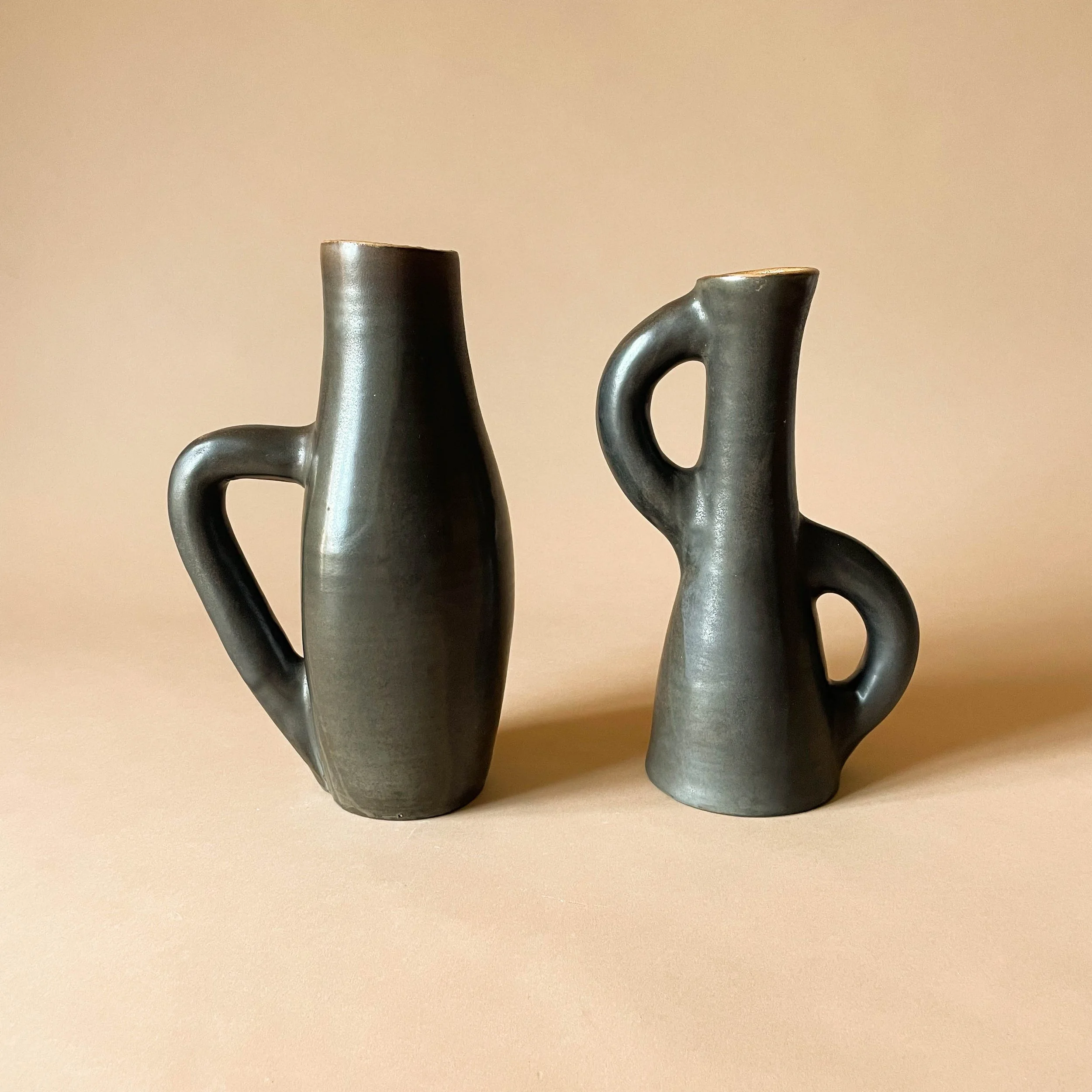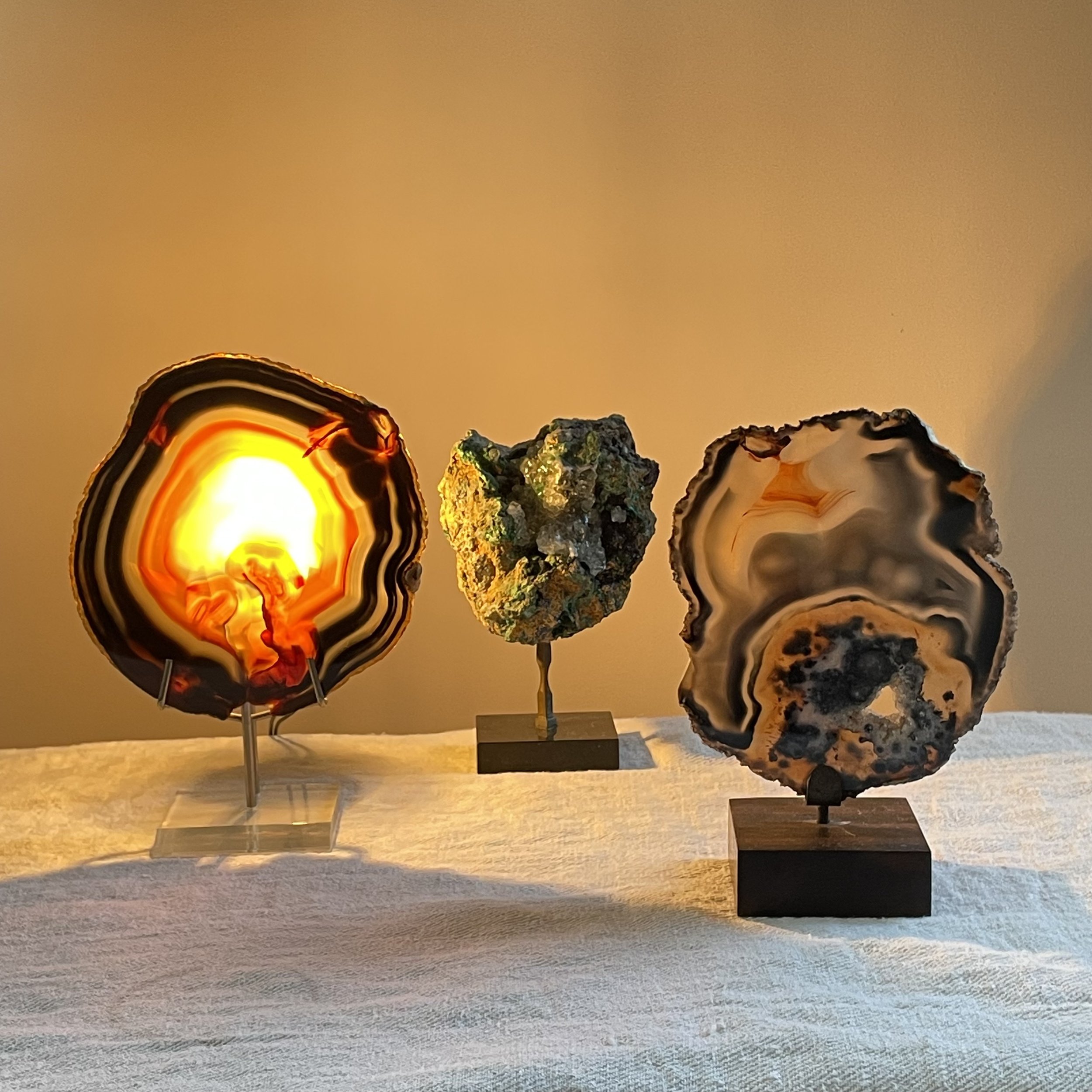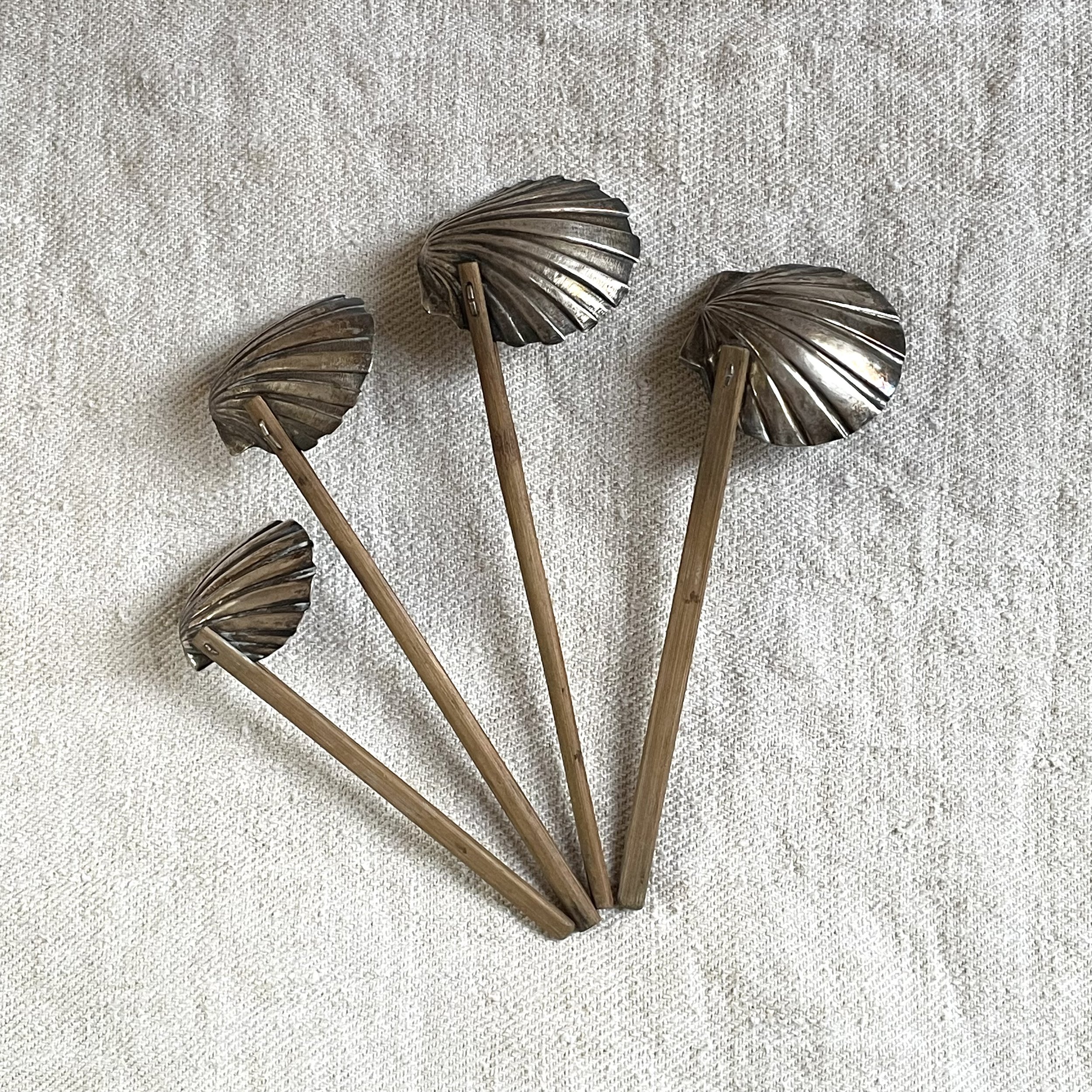Deux vases forme libre, attribué Roger Jacques










Deux vases forme libre, attribué Roger Jacques
Deux vases en faïence émaillée noir mat, cuisson au bois
Roger Jacques, attribué à
Circa 1950
Signés RJ à la pointe
H 29,5 cm et 28,3 cm
Très bon état, microégrenures à la base
Two matte black glazed earthenware vases, wood fired
Roger Jacques, attributed to
Circa 1950
Signed RJ at the tip
H 29,5 cm and 28,3 cm
Very good condition, microfractures on the base
Roger Jacques fut actif à saint Amand en Puisaye. Il embrasse la tradition du grès en élaborant une vaisselle de qualité en grès orange, brun à noir souvent revêtue d’un émail stannifère ou bleuté laissant apparaître la terre en transparence. Ce n’est pas très éloigné stylistiquement de ce que proposent en poterie culinaire les Pierlot au château de Ratilly, Pierre Digan dont le goût est plus moderniste ou les Baudat dont la terre très pyritée les identifie au premier coup d’oeil. Lui même est établi dans l’ancien atelier de Paul Jeanneney, dans les communs du château de Saint Amand, après que son père a cessé l’activité.
Il tourne également des pièces de forme, des vases comme des pièces uniques aux émaillages variés principalement mats et satinés dans des couleurs intenses.
Les deux vases présentés ici sont de formes complémentaires avec des anses asymétriques. On peut voir les traces de l’émaillage à la louche dans ce noir mat presque métallisé. Il contraste avec le beige jaune de l’intérieur. Ce style très emblématique des années 50 est plutôt caractéristique du travail de la faïence. En effet, il s’apparente plus aux expérimentations de Madoura ou de Georges Jouve qu’aux expérimentations concommittantes à la Borne et Saint Amand en Puisaye.
Dernier de sa lignée, il cesse son activité à la fin du XXème siècle.
Roger Jacques was active in Saint Amand en Puisaye. He embraced the tradition of stoneware by creating quality tableware in orange, brown to black stoneware, often coated with a tin glaze or bluish glaze that reveals the earth in transparency. Stylistically, this is not very far from the culinary pottery offered by Pierlot at the Château de Ratilly, Pierre Digan, whose taste is more modernist, or Baudat, whose very pyritized clay identifies them at first glance. He himself is established in the former workshop of Paul Jeanneney, in the outbuildings of the castle of Saint Amand, after his father ceased the activity.
He also turns shaped pieces, vases as well as unique pieces with various glazes mainly matte and satin in intense colors.
The two vases presented here are of complementary shapes with asymmetrical handles. One can see the traces of the ladle glazing in this almost metallic matte black. It contrasts with the yellow beige of the interior.
This very emblematic style of the 50s is rather characteristic of the work of earthenware. Indeed, it is more similar to the experiments of Madoura or Georges Jouve than to the concomitant experiments at La Borne and Saint Amand en Puisaye.
The last of his lineage, he ceased his activity at the end of the 20th century.










